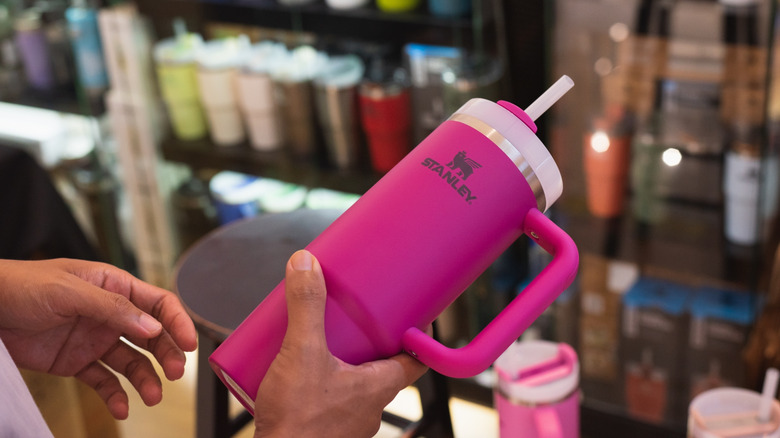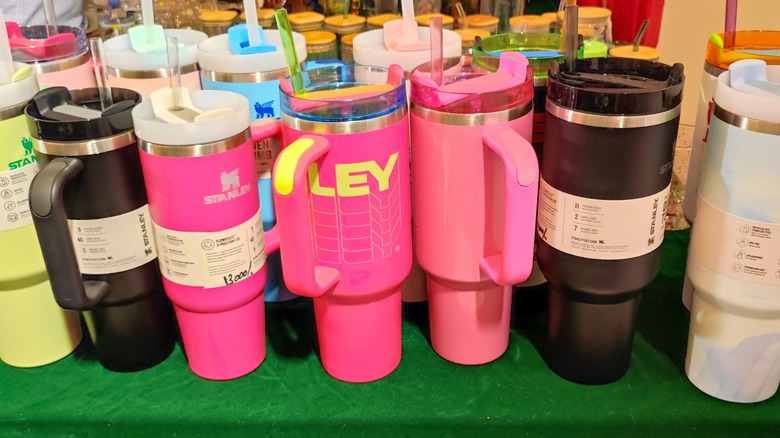The Meaning Behind Stanley's Iconic Bear With Wings Logo
We may receive a commission on purchases made from links.
You know why you should drink water first thing in the morning — and all day long, for that matter! — but have you ever looked at that Stanley tumbler beside your bed and wondered about the cool-looking bear with wings and a crown on the logo? The brand's stainless steel drinkware has been manufactured for over a century, but the past few years have seen it achieve exponential sales increases, with the iconic 40-ounce Quencher becoming one of social media's favorite plastic water bottle alternatives. Now, that much is factual. The story of the Stanley bear, however, is rooted in a bit of tongue-in-cheek folklore; a tall tale, if you will.
According to Stanley's website, ever since William Stanley Jr. invented the first Stanley flask, happy customers have written letters to the company to share stories of their adventures. One apocryphal letter was supposedly written by a man who went camping with his wife. Fast asleep after a night of firelit camaraderie and a bit of tippling under the stars, he woke up to find a bear rummaging through the tent. The terrified man reached for his Stanley bottle and took aim at the bear, only to accidentally bean his wife in the head. Infuriated, she swung the bottle right back at him. The bear, unnerved by the domestic fracas, ambled away into the night. This slapstick anecdote, which has passed around Stanley headquarters for an uncertain number of years, inspired the regal winged bear on Stanley's logo.
In recent years, Stanley has become a cultural phenomenon
Looking at the battered, dull-colored Stanley thermos that your grandpa used to tote his morning coffee to the office for two decades in the middle of the last century, it's hard to see the resemblance to today's outrageously hued, oh-so-coveted Quencher mugs covered in sets of color-coordinating pompom key chains, silicone boots, and straw covers. Yes, bottled water does expire (kind of), and, therefore, reusable cups are both an environmentally and health-friendly idea, but what gets folks paying hundreds of dollars and standing in hours-long lines for limited-edition specimens?
In short, the Stanley mug adoration is just the newest consumer cultural obsession. In the 1990s, your parents went gaga for the same Beanie Babies that currently collect dust cooties in thrift store bins. Before that, it was Tickle Me Elmo and Cabbage Patch Kids dolls. We didn't call it "going viral" back then, but the idea has always existed. One might argue that Stanley mugs are more utilitarian than toys and might not ever completely fall off the map in popularity, but there's every chance that, in 10 years or so, the public's attention might have moved on. We'd put good money on Stanley pivoting and sticking things out long-term, however. Just like the long-lived story of its bear mascot, the centenarian company knows how to adapt for a new generation.

